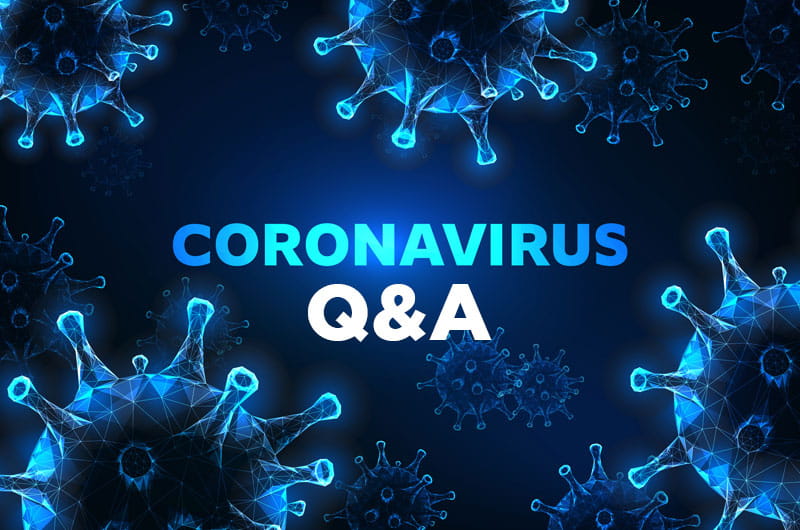COVID-19 Q&A with College of Medicine Dean Charles B. Cairns, MD

- ‘Too Much Going On’: Autistic Adults Overwhelmed by Nonverbal Social Cues
- Drexel’s College of Nursing and Health Professions Receives $1 Million for Scholarships from the Bedford Falls Foundation – DAF to Address Nursing Workforce Shortage
- When Climate Disasters Hit, They Often Leave Long-term Health Care Access Shortages, Drexel Study Finds
- New Research Highlights Health Benefits of Using Heritage Art Practices in Art Therapy

Please visit the ‘Drexel’s Response to Coronavirus’ website for the latest information on campus preparations and responses regarding COVID-19.
Charles B. Cairns, MD, is the Walter H. and Leonore Annenberg Dean and senior vice president of medical affairs at Drexel University College of Medicine. He’s a leader in emergency medicine and critical care research, and he was previously the principal investigator of the National Collaborative for Bio-Preparedness (funded by the U.S. Department of Homeland Security) and director of the U.S. Critical Illness and Injury Trials Group (funded by the National Institutes of Health). Both of these programs have focused on the detection and response to disease outbreaks.
In this Q&A, Cairns discussed the known risks of COVID-19, as well as how St. Christopher’s Hospital for Children has prepared prevention and control guidelines.
Q: What do we know about the COVID-19?
A: COVID-19 stands for coronavirus disease 2019, which is part of the coronavirus family of viruses. Coronavirus is a viral class that includes the common cold, and also includes SARS (severe acute respiratory syndrome) and MERS (Middle East respiratory syndrome).
COVID-19 has now spread to 107 countries with over 109,000 cases and over 3,900 deaths reported. In the U.S., there are over 600 reported cases across 36 states with 22 deaths reported. There is probably significant underreporting, too.
Q: What don’t we know about COVID-19?
A: There is uncertainty in incubation period (believed to be 4 to 14 days). There is uncertainty in case fatality rate (believed to be 2% and 4%), which comes from dividing the number of deaths caused by a disease by the number of individuals diagnosed with that disease in a set period of time. And there is uncertainty in morbidity rates, or how frequently the disease appears in a population, due to the hospitalization and ICU need of individuals with that disease (it’s believed to be between 5% and 25%).
We also don’t know how infectious it is, as shown through the basic reproduction number, R0, for the average number of infections per person transmitted from a single infected person. There is evidence that there is asymptomatic spread, which means that the disease can spread from people who are infectious yet have no symptoms. In addition, there are some reports of evidence of reinfection after patients have had remission of symptoms and been discharged from the hospital.

Q: What are the innovations surrounding COVID-19?
A: As far as treatments go, the National Institutes of Health (NIH) is conducting trials of antiviral drugs, most notably Remdesivir (through Gilead Sciences, a pharmaceutical company), which is a broad antiviral drug which has shown activity against SARS and MERS. Candidate vaccines being evaluated at NIH utilizing new technologies based on messenger RNA (through Moderna Inc.). Two others are being supported by the Coalition for Epidemic Preparedness Innovations.
Q: It’s been recommended that people continue to get shots for the flu, but there is no vaccine for COVID-19. What is the best prevention?
A: Wash your hands often, and for 20 seconds with soap. Use alcohol-based hand-sanitizer liberally. Do not touch your face. Avoid handshakes and face kissing. Clean and disinfect surfaces. And there’s also social distancing, or avoiding large crowds and public gatherings, to avoid community spread.
Q: What are St. Christopher’s Hospital for Children's prevention and control guidelines for patients with confirmed COVID-19 or people under investigation for COVID-19 in health care settings?
A: Here they are, listed:
- Minimize the chance for exposures
- Adhere to standard, contact and airborne precautions, including the use of eye protection
- Manage visitor access and movement within the facility
- Implement engineering controls (physical separation of patients, air-handling systems)
- Monitor and manage ill and exposed health care personnel
- Train and educate health care personnel
- Implement environmental infection control (appropriate equipment and environmental cleaning and disinfection procedures)
- Establish reporting within health care facilities and to public health authorities
Q: What are some of the sites that you’ve been getting COVID-19 information from?
A: nih.gov; cdc.gov; nejm.org; scientificamerican.com; Medscape.com and washingtonpost.com.
In This Article
Contact
Drexel News is produced by
University Marketing and Communications.
